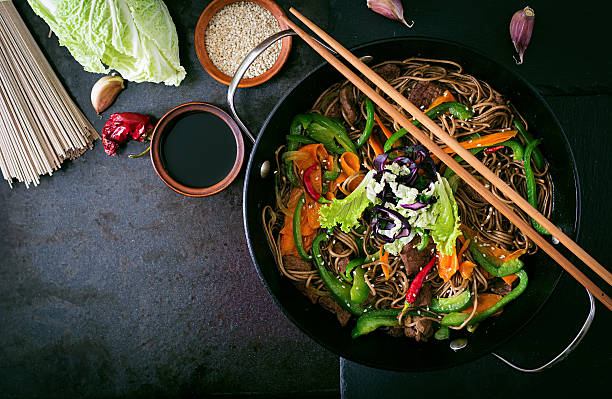The Western world is accustomed to Chinese cuisine in the form of take-out boxes or chow mein and orange chicken. The prescription is basically to eat the real traditional Chinese diet (which actually has some mild variance in different regions) that is thousands of years old and core principles include balance, variety and moderation so that the body can adapt to and develop around Nature’s natural rhythms. In this post we discover some of the least known aspects of the traditional Chinese diet that go hand in hand not only with living a long life but also an harmonious one.
Principles of the Traditional Chinese Diet
The Philosophy of Yin and Yang
In the world of Traditional Chinese Medicine, foods are thought to be either Yin (cooling) or Yang (warming). The body depends on that balance to keep everything working the way it should. This typically means balancing the yang aspects of red meat and pungent flavors with yin foods like fruits and vegetables, based on one’s internal needs (this changes with the season, age and constitution).
The Five Flavors

Chinese eating habits are also five-flavored; Sweetness, Sourness, Saltiness, Bitterness and Spiciness. In fact, each flavor is related to a pair of organs in the body and can be used medicinally to regulate organ function. For instance, bitter foods, it is claimed, help heart health. Pretty much every flavor profile in all traditional meals, belonging to many thousands of years-worth of cultural cuisine, seems to find its way into this bowl of intestinal health-promotion.
Rare and Traditional Ingredients and Cooking Methods
Fermented Black Beans – Douchi
Unlike the more commonly known soy sauces or tofu, douchi is a fermented black bean product used in Chinese cooking. It’s one of the oldest known foods made from soybeans, dating back over 2,000 years. Douchi is rich in probiotics and known for enhancing digestion and adding a unique umami flavor to Chinese dishes like mapo tofu and black bean chicken.
Lotus Seeds – A Symbol of Purity and Nutrition
Lotus seeds used in Chinese medicine for centuries, are harvested from the lotus plant and consumed dried, popped, or as paste in desserts. They are valued not just for their taste but for their health benefits, including heart protection, kidney health, and soothing the nerves.
Bamboo Fungus – A Delicacy of Sustainability

Bamboo fungus or bamboo pith is a lesser used ingredient which has been mostly overlooked in discussions about Chinese cuisine. This fungus grows inside the hollow sections of certain species of living bamboo.
The texture has always been a major win. It is also great and has stunning health benefits, ranging from enhancing immune function to its anti-inflammatory properties.
Cooking Techniques That Preserve and Enhance
Red Cooking – Braising for Depth
Red cooking or slow braising is a Chinese mainland flavoring technique with the characteristics of using soy sauce, wine and other seasonings to simmer the ingredients until caramelized. The process not only adds a rich, dark flavor and color to the contents but also allows food nutrients to remain intact, promoting better digestion.
Double Steaming – The Ultimate in Gentle Cooking
Double steaming; also sometimes called double boiling, is a centuries-old cooking technique where food is covered and cooked for an extended time. This approach is employed when preparing nutritious but easy-to-digest foods and dishes suitable as remedies, such as bird nest soup and shark fin.
A Diet Rooted in Sustainability and Health

These classic Chinese diets are local and seasonal, supporting ecological integrity through sustainability, and offer the body the nutrients it needs according to each time of year. This respect for nature’s cadence and our life’s natural course is part of the philosophy of NOSAED (None Of Suffering And Early Death), aiming to ward off aging and disease.
In the Traditional Chinese Diet, food is not simply eaten but can be a powerful medicine, a way of living, and even a path to balance. By adopting some of these ancient practices and rare ingredients into modern diets, we not only improve our wellbeing, but also find a greater reverence for the wisdom that has been handed down through generations at work in Chinese culinary tradition.
Thank you for reading my article about “Traditional Chinese Diet” and I would love to receive your comments down below, in case of any.

